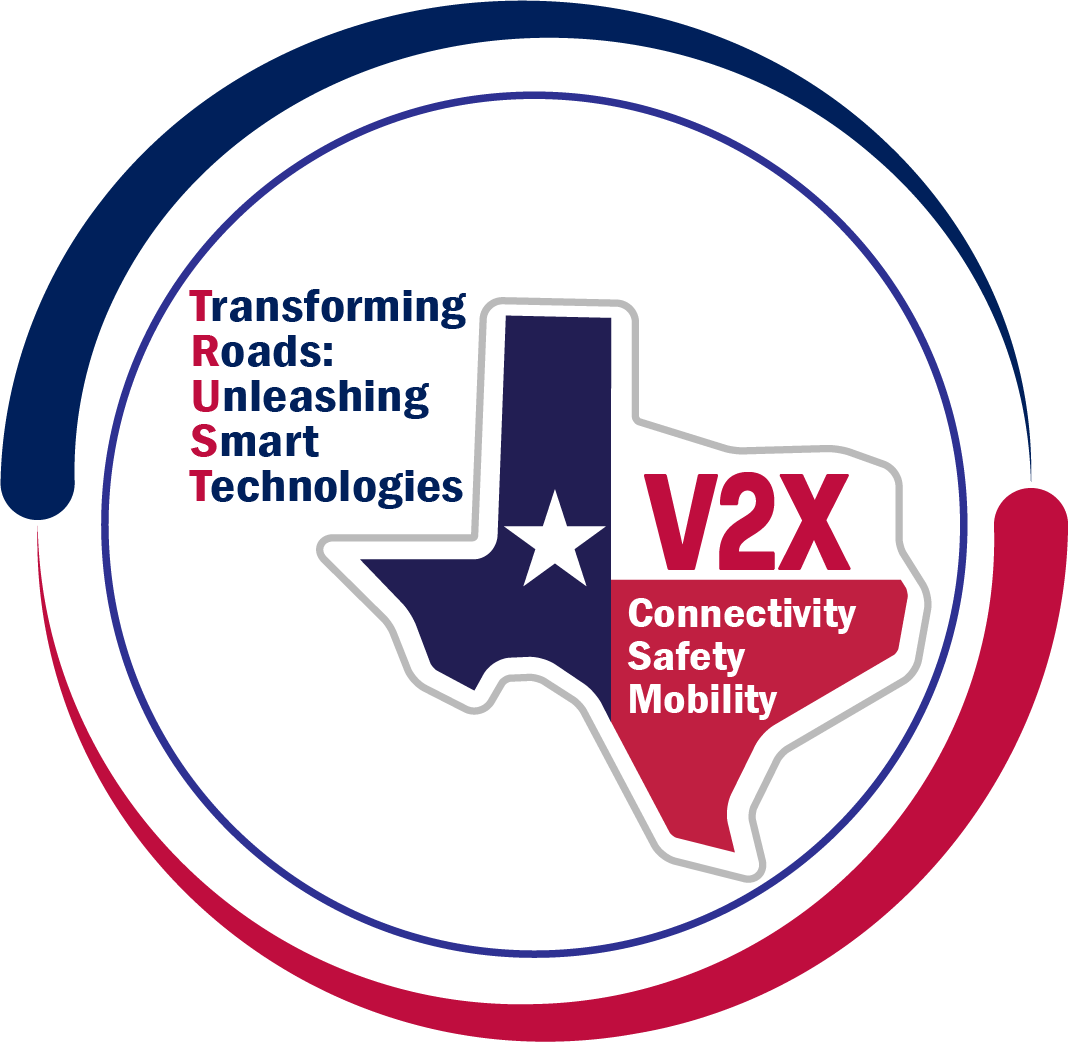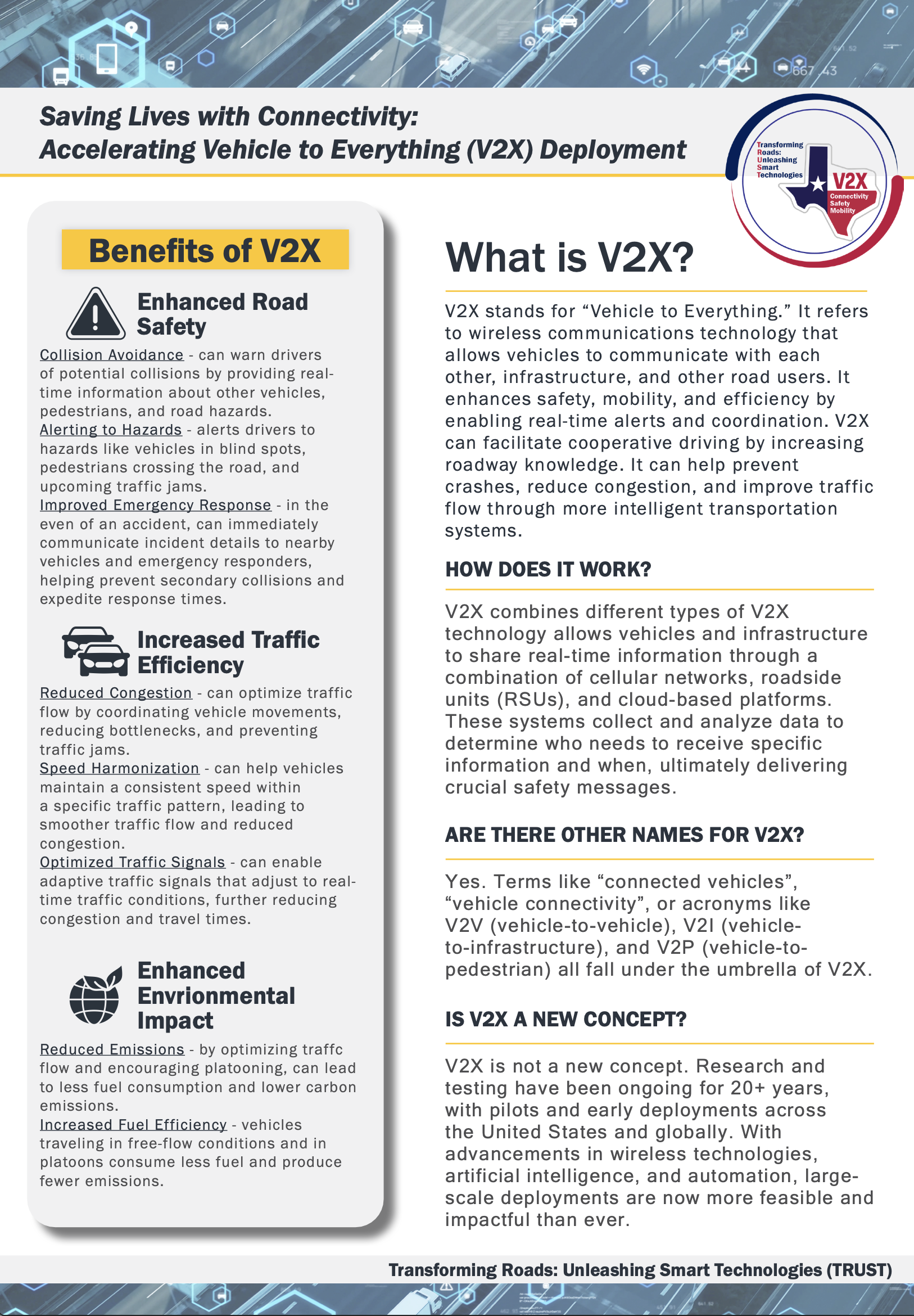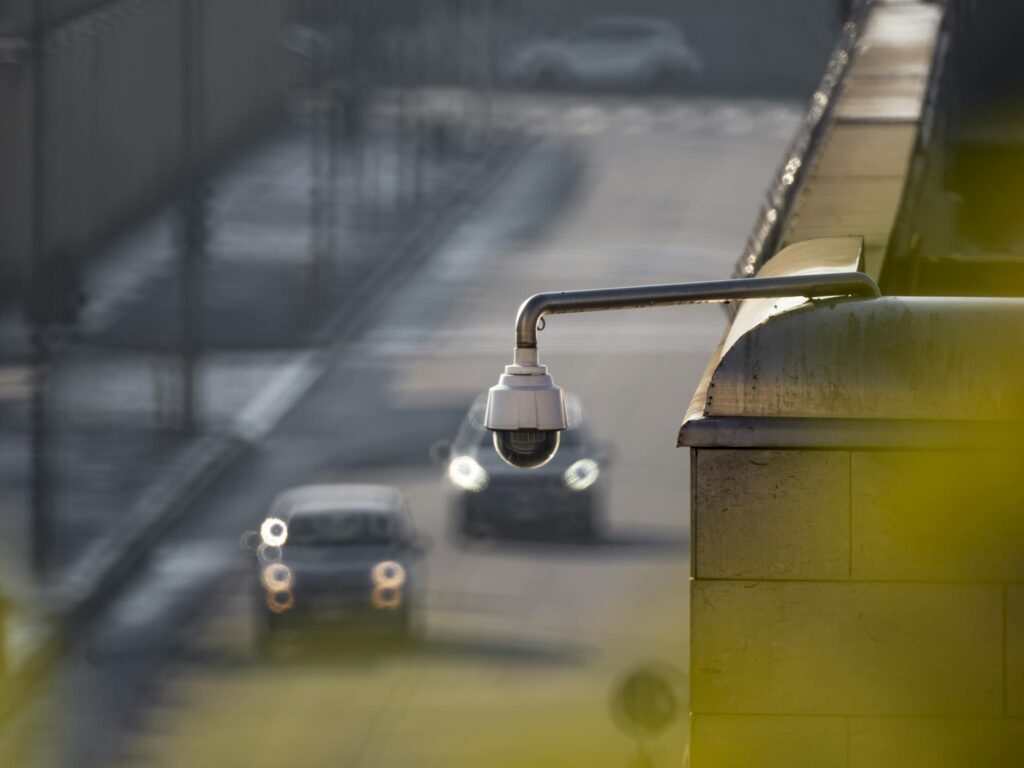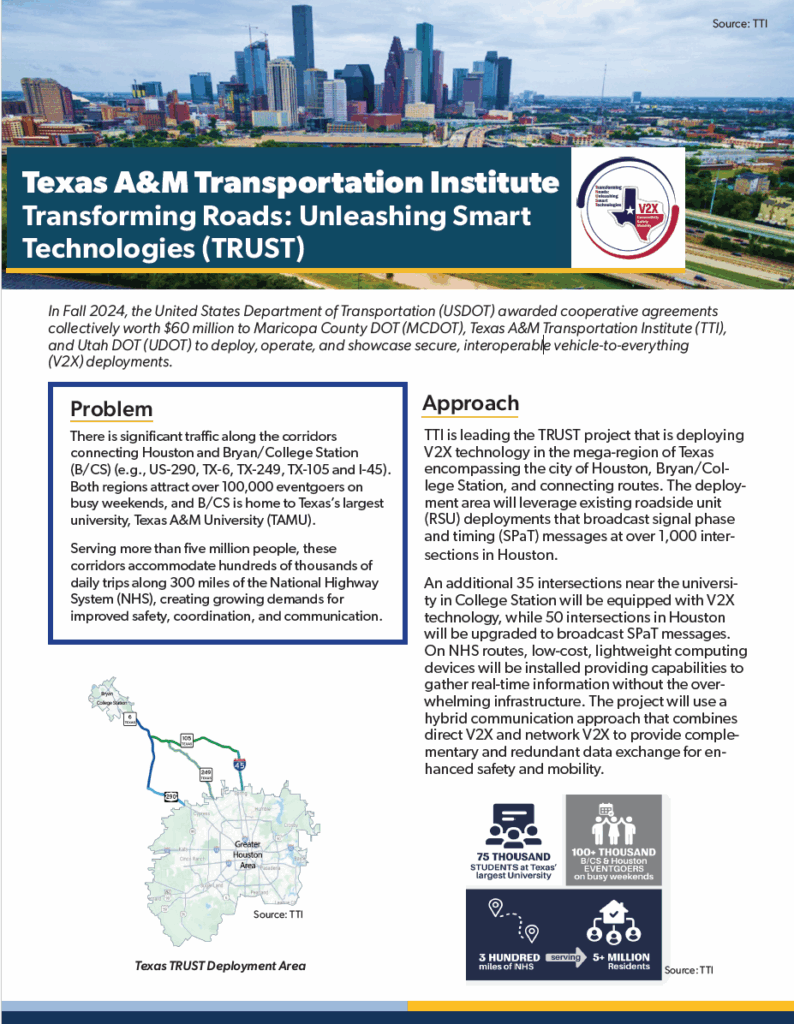Frequently Asked Questions
Explore our most common questions about our innovative project.
V2X stands for “Vehicle to Everything.”
It refers to wireless communications technology that allows vehicles to communicate with each other, infrastructure, and other road users. It enhances safety, mobility, and efficiency by enabling real-time alerts and coordination.
V2X can facilitate cooperative driving by increasing roadway knowledge. It can help prevent crashes, reduce congestion, and improve traffic flow through more intelligent transportation systems.
V2X technology allows vehicles and infrastructure to share real-time information through a combination of cellular networks, roadside units (RSUs), and cloud-based platforms.
These systems collect and analyze data to determine who needs to receive specific information and when, ultimately delivering crucial safety messages.
Yes. Terms like “connected vehicles“, “vehicle connectivity“, or acronyms like V2V (vehicle-to-vehicle), V2I (vehicle-to-infrastructure), and V2P (vehicle-to-pedestrian) all fall under the umbrella of V2X.
V2X is not a new concept. Research and testing have been ongoing for 20+ years, with pilots and early deployments across the United States and globally.
With advancements in wireless technologies, artificial intelligence, and automation, large-scale deployments are now more feasible and impactful than ever.
V2X is not widely available to the public and is currently limited to select deployments and pilot programs.
However, the equipment needed to transmit messages is available, and a few high-end vehicles can already receive these messages.
While direct cellphone reception is not currently supported, some mobile apps developed as part of pilot programs can receive V2X messages. Ultimately, the goal is for all road users, regardless of vehicle or device, to seamlessly receive relevant safety messages with minimal effort.
V2X can improve your traveling experience by providing early alerts of roadway conditions, including road hazards, upcoming traffic, vulnerable road users out of sight, and other crucial information. By keeping road users informed, V2X can help drivers and road users be one step ahead and make better decisions that improve their safety, mobility, and efficiency.
There are many types of safety alerts users can receive. Some examples include:
- Upcoming traffic or vehicle accidents
- Vulnerable road users nearby
- Notifications when an emergency vehicle is approaching
- Work Zone Alerts
- Weather Alerts
The Texas TRUST Project is deploying several V2X applications or use cases. For more information, visit our Deployment Sites Map.
The long-term goal is to display messages on a vehicle’s dashboard or a smartphone through a mobile or navigation app. A few high-end vehicles can receive these messages, and some mobile applications have been developed through deployment and pilot programs.
As V2X technology evolves, ongoing research is focused on making these messages accessible to all road users.
Not yet. V2X requires both vehicles and infrastructure to be equipped with compatible technology. Part of ongoing V2X deployment and research efforts are focused on expanding compatibility so that overtime all vehicles can receive safety messages regardless of manufacturer or type.
V2X is different from autonomous vehicles.
V2X focuses on cooperative driving by facilitating communication between vehicles, infrastructure, and other road users by gathering information from sensors and infrastructure installed on the roadway.
Automated vehicles focus more on self-driving and use information collected from the vehicle’s equipment and sensors.
No. V2X is not a service you will have to pay for. It is designed to benefit all road users.
As V2X becomes more widely available, vehicles and roads will become pre-equipped or be retrofitted with V2X capabilities.
V2X systems prioritize privacy by ensuring that personal information is not shared. Instead, they focus on safety-related data, such as vehicle position, speed, and direction, without associating this information with a specific driver. The messages exchanged are typically anonymous and encrypted.



